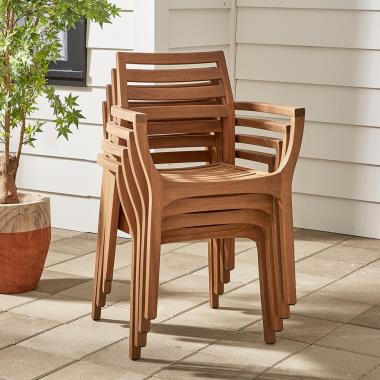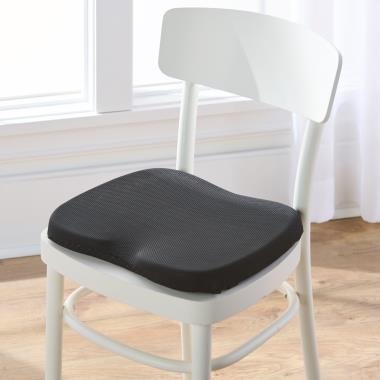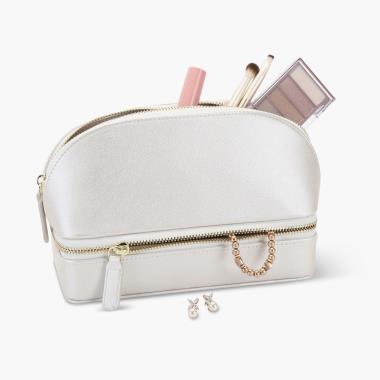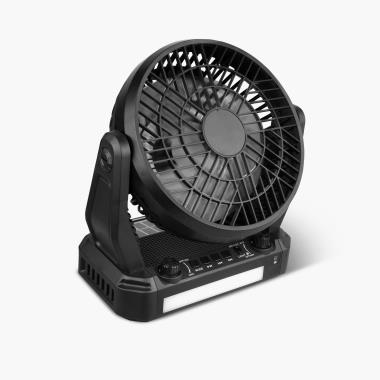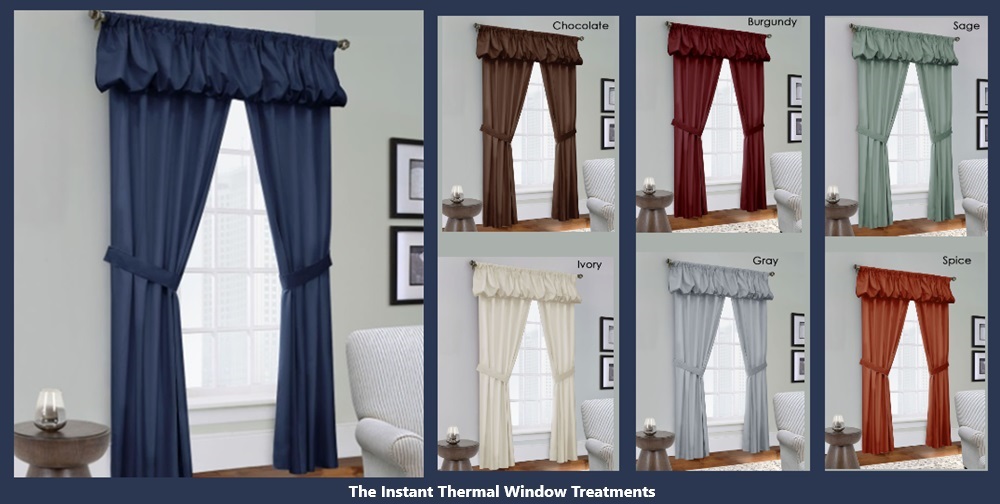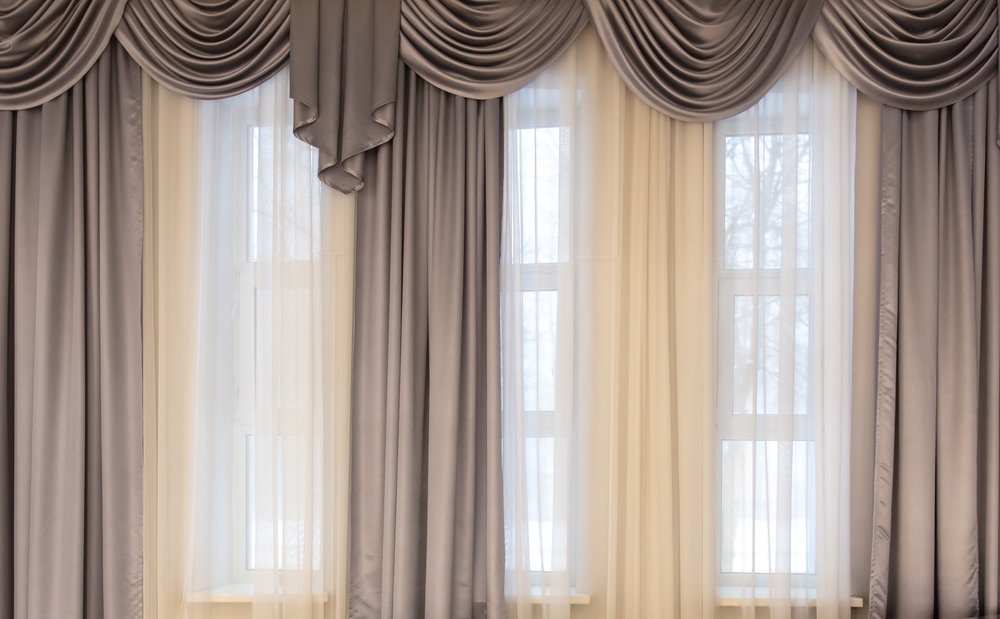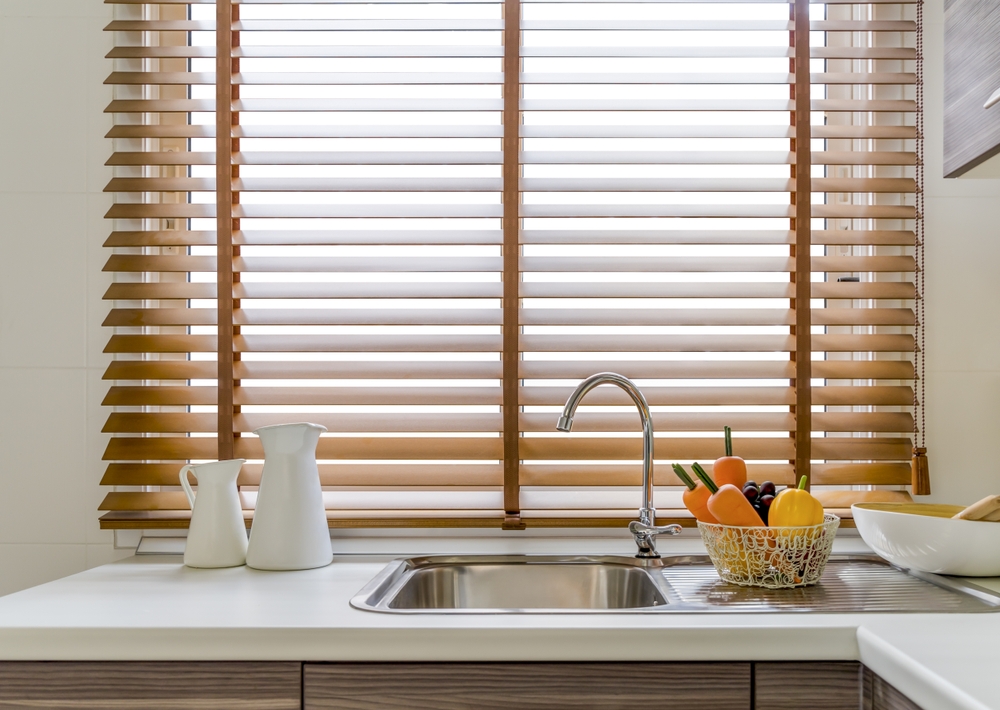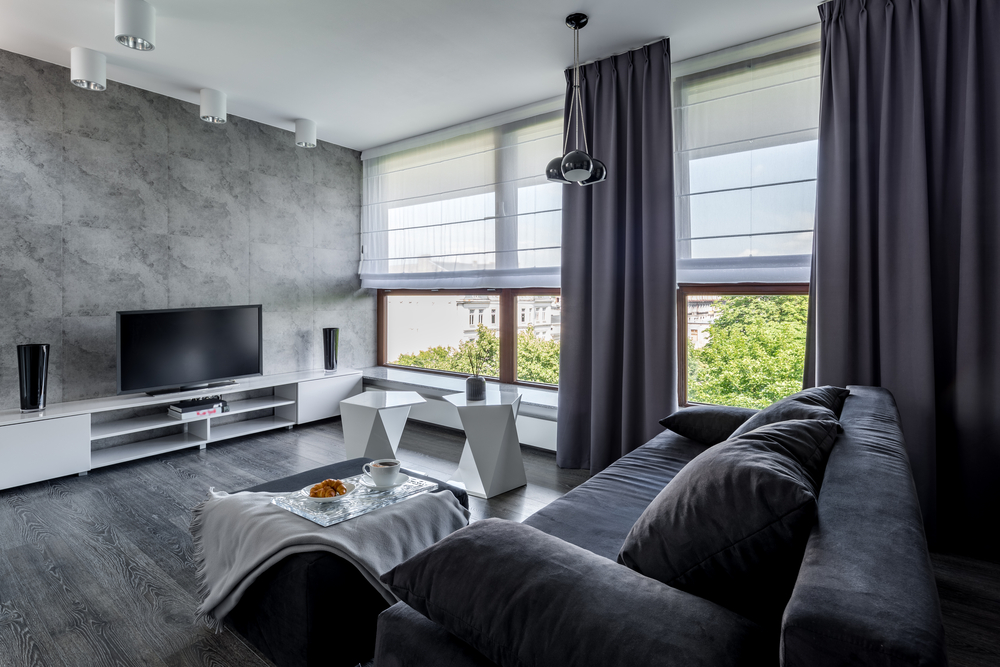Curtains vs. Blinds: Which Window Treatment Is Right for Your Space?
Choosing the right window treatment can transform a room, providing not only privacy and light control but also a significant boost to the overall aesthetic of your space. With so many options available, the curtains vs. blinds question is sure to come up, and making a choice can feel overwhelming.
Each offers distinct benefits, from the elegance and warmth of flowing drapes to the sleek, modern appeal of blinds. But how do you determine which is best for your home?
In this article, we’ll explore the key factors to consider when choosing between curtains and blinds, helping you make an informed decision that enhances both the function and style of your living spaces.
Whether you’re looking for something that seamlessly blends with your existing decor or seeking a statement piece that sets the tone for the entire room, understanding the strengths and limitations of each option will guide you toward the perfect choice when you explore the Hammacher Schlemmer website.
Curtains vs. Blinds—Factors to Consider
Selecting the ideal window treatment for your space involves more than just picking what looks good. It’s about balancing functionality, aesthetics, and practicality to ensure that your choice enhances the room in every possible way. Here are the key factors to consider when deciding between curtains and blinds.
Functionality
One of the primary considerations when choosing between curtains and blinds is their functional role in your space. Think about what you need the window treatment to do:
—Light Control: Do you need to block out light entirely, or are you looking for a way to gently diffuse sunlight? Curtains, especially those with blackout lining, can completely darken a room, making them ideal for bedrooms. Blinds, on the other hand, offer more precise light control, allowing you to adjust the slats to let in just the right amount of light.
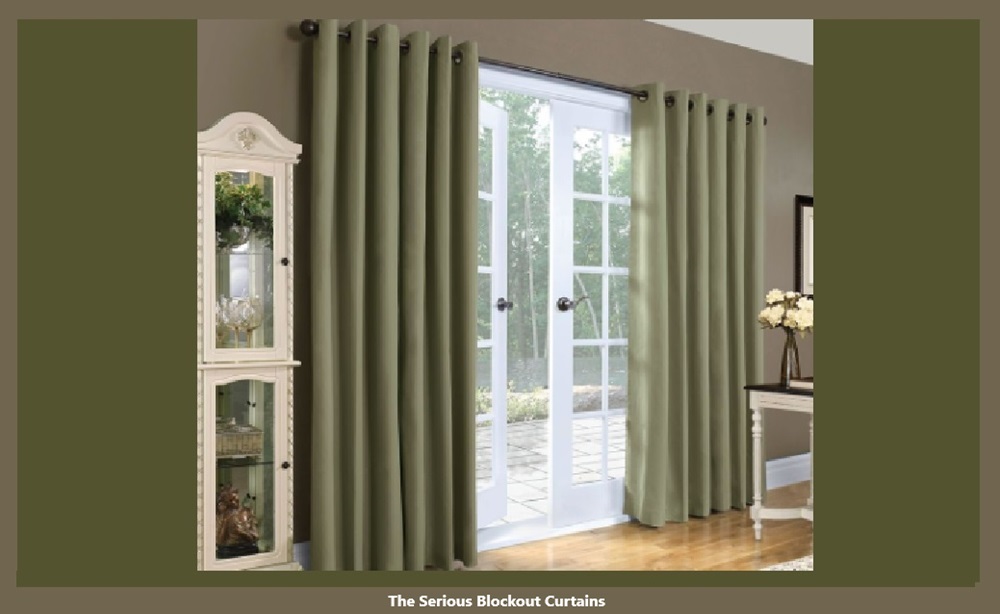
—Privacy: Privacy needs vary from room to room. In bathrooms or bedrooms, you may prioritize complete privacy, which curtains can provide when fully drawn. Blinds can also offer privacy but may have gaps depending on the style, which could be a consideration for more private spaces.
—Insulation and Energy Efficiency: Window treatments can play a crucial role in regulating the temperature of your home. Temperature Regulating Sheers can be used along with heavy curtains to act as an additional layer of insulation, helping to keep rooms warm in winter and cool in summer. Blinds, while not as insulating, can still provide some temperature control, particularly if they’re made from materials designed to reflect heat.
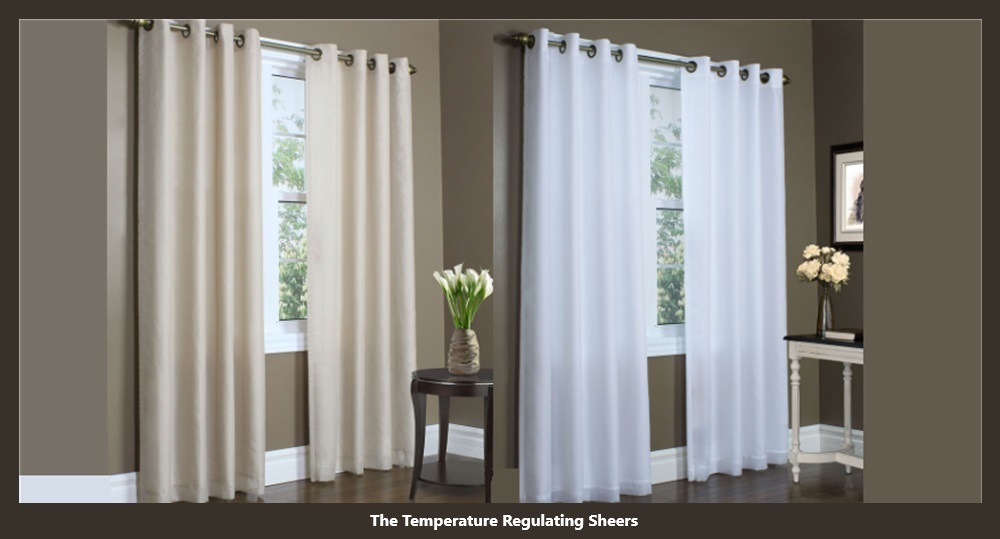
Aesthetic Appeal
Your window treatments should complement the overall decor of your room, adding to its style rather than detracting from it:
—Style and Design Options: Curtains offer a vast array of design possibilities, from elegant floor-to-ceiling drapes to casual, patterned panels. They can bring a sense of warmth and softness to a room, making them a versatile option for various interior styles. Blinds, with their sleek lines and minimalist appeal, often suit modern or contemporary spaces, adding a clean, uncluttered look.
—Impact on Room Ambiance: The type of window treatment you choose will significantly influence the atmosphere of your room. Curtains tend to create a cozy, inviting environment, while blinds contribute to a more streamlined and organized appearance. Your choice should reflect the mood you wish to set in each space.
Practicality
While the look and function of your window treatments are crucial, practicality should not be overlooked. Consider the following aspects:
—Maintenance and Cleaning: Curtains can require more effort to clean, especially if they’re made of delicate fabrics or extend to the floor. They may need regular vacuuming, dry cleaning, or even washing, depending on the material. Blinds, however, are generally easier to maintain—often requiring just a quick dusting or wipe down.
—Durability and Longevity: The longevity of your window treatments depends on the materials and construction. High-quality curtains can last for years with proper care, but may wear out faster in high-traffic areas or where they’re exposed to direct sunlight. Blinds, particularly those made of durable materials like aluminum or wood, tend to withstand wear and tear better over time.
—Cost Considerations: Budget is always a factor when making home decor decisions. Curtains can range from affordable to high-end, depending on the fabric and customization options. Blinds also vary in price, with custom-made options often costing more. Consider the long-term investment, as higher-quality treatments may offer better durability and performance, potentially saving money in the long run.

Curtains: Features, Benefits, and Drawbacks
Curtains have been a popular choice for window treatments for centuries, offering both practical and aesthetic advantages. Their versatility in design and functionality makes them suitable for various rooms and decor styles. However, like any window treatment, curtains have their own set of benefits and drawbacks. Understanding these will help you determine if curtains are the right choice for your space.
Features of Curtains
Curtains come in a wide range of styles, materials, and designs, allowing you to tailor them to the specific needs and aesthetic preferences of your space:
—Material Options: Curtains are available in various fabrics, from lightweight sheers to heavy, insulated drapes. This variety allows you to choose materials that match the function of the room. For instance, sheer curtains provide a light and airy feel, perfect for living rooms or sunrooms, while heavier fabrics like velvet or blockout curtains are ideal for bedrooms where light control and privacy are paramount. Furthermore, with special blockout curtain rods, curtains can blockout everything.
—Variety in Patterns and Colors: One of the standout features of curtains is the vast array of patterns, colors, and textures available. Whether you’re looking for a bold, patterned design to make a statement or a neutral tone to blend seamlessly with your decor, curtains offer endless possibilities. This diversity allows for greater customization, enabling you to create a cohesive look that complements your overall design theme.
—Customization and Versatility: Curtains can be customized to fit any window size, shape, or style. They can be layered with other window treatments, such as valances or sheers, to create a more dynamic and functional window covering. Additionally, curtains can be hung in various ways—on rods, tracks, or with tiebacks—allowing you the flexibility to achieve the exact look and feel you desire.
Benefits of Choosing Curtains
Curtains offer several advantages that make them a preferred choice for many homeowners:
- Softening of Room Appearance: Curtains have the unique ability to soften the look of a room, adding warmth and a sense of coziness. The fabric can introduce texture and movement, making the space feel more inviting and comfortable. This quality is particularly beneficial in living rooms, bedrooms, and other areas where a relaxed, homey atmosphere is desired.
- Better Sound Insulation: The thick, layered nature of curtains can help reduce noise levels, making them an excellent choice for rooms where sound insulation is important. Heavy drapes can absorb sound, reducing echoes and muffling outside noise, which is especially valuable in urban settings or near busy streets.
- Flexibility in Light Control with Layering: Curtains offer a unique advantage when it comes to light control. By layering different types of curtains—such as combining sheers with heavier drapes—you can achieve varying levels of light filtration throughout the day. This flexibility allows you to adjust the amount of light entering the room according to your preferences and the time of day.
Drawbacks of Curtains
While curtains have many advantages, there are also some potential downsides to consider:
- Curtains can Be Bulky or Overwhelming in Small Spaces: In smaller rooms, curtains can sometimes feel overwhelming, especially if they are made from heavy fabrics or feature bold patterns. The bulk of the fabric can make a space feel cramped or cluttered, which may not be ideal in rooms where you want to maintain an open, airy feel.
- Potentially Higher Maintenance with Certain Fabrics: Curtains require regular maintenance to keep them looking their best. Depending on the material, they may need to be vacuumed, dry-cleaned, or washed periodically. This can be time-consuming, particularly with larger, heavier curtains that require professional cleaning. Additionally, certain fabrics may be prone to fading if exposed to direct sunlight, requiring careful consideration of placement and care.
- May Require Professional Installation for Larger Windows: Installing curtains on large or unusually shaped windows can be challenging and may require professional assistance. Ensuring that the curtains hang properly and operate smoothly can involve complex measurements and hardware installation, which can add to the overall cost and effort.
Blinds: Features, Benefits, and Drawbacks
Blinds are a popular window treatment choice known for their sleek appearance and precise control over light and privacy. With a variety of materials and styles available, blinds can be tailored to suit both modern and traditional spaces. However, like any window treatment, they come with their own set of advantages and disadvantages. Understanding these will help you decide if blinds are the right fit for your home.
Features of Blinds
Blinds offer a range of features that make them a versatile and practical option for many spaces:
—Material Options: Blinds come in various materials, including wood, faux wood, metal, and fabric, each offering different looks and functionalities. Wooden blinds, for example, provide a warm, natural appearance, while metal blinds offer a more modern, industrial vibe. Faux wood blinds are a popular choice for humid environments like kitchens and bathrooms, as they resist warping and moisture damage.
—Styles: Blinds are available in several styles, each catering to different aesthetic preferences and functional needs.
- Venetian blinds feature horizontal slats that can be tilted to control light and privacy.
- Roman blinds fold into neat pleats when raised, offering a soft, fabric look with the functionality of blinds.
- Vertical blinds are ideal for large windows or sliding glass doors, with vertical slats that can be tilted or drawn to the side.
—Precise Light Control: One of the most significant advantages of blinds is the precise control they offer over light and privacy. The ability to tilt the slats allows you to adjust the amount of light entering the room, from fully open to completely closed or anywhere in between. This level of control is particularly useful in spaces like home offices or living rooms, where managing glare and maintaining privacy are important.
Benefits of Choosing Blinds
Blinds offer several benefits that make them an attractive option for many homeowners:
- Sleek and Modern Appearance: Blinds are known for their clean, streamlined look, making them an excellent choice for modern or contemporary interiors. They provide a minimalist aesthetic that can complement a wide range of decor styles without overwhelming the space. This makes blinds particularly well-suited for small rooms or areas where you want to maintain a clutter-free, open feel.
- Space-Saving Design: Blinds take up minimal space, both in terms of depth and the area they cover when fully opened. Unlike curtains, which can extend several inches into the room, blinds sit close to the window, maximizing floor space and keeping the room feeling open. This space-saving design is particularly beneficial in compact rooms or areas where furniture is placed close to the windows.
- Easier to Clean and Maintain: Blinds are generally easier to clean and maintain than curtains. Most blinds can be quickly dusted or wiped down with a damp cloth, making them a low-maintenance option for busy households. Additionally, their materials are often more resistant to stains and fading, which means they can retain their appearance for longer with minimal upkeep.
Drawbacks of Blinds
While blinds offer many advantages, they also have some drawbacks to consider:
- May Not Provide the Same Insulation as Curtains: Blinds typically do not offer the same level of insulation as curtains, especially when it comes to blocking out drafts or retaining heat. While certain types of blinds, such as cellular or honeycomb blinds, are designed with energy efficiency in mind, most standard blinds allow more air to pass through, making them less effective at regulating temperature. This could lead to higher energy costs in extreme weather conditions.
- Limited Style Variations Compared to Curtains: Although blinds are available in various materials and styles, they generally offer fewer design options compared to curtains. Curtains can provide more opportunities for customization with patterns, colors, and textures, allowing for a more personalized and decorative approach. Blinds, while stylish, tend to be more uniform in appearance, which may not appeal to those looking for a bolder or more decorative window treatment.
- Blinds Can Be Noisy or Less Effective in Sound Dampening: Blinds, especially those made of metal or wood, can be noisier than curtains, particularly when they are adjusted or when there is a breeze. The slats can clatter against each other, creating noise that may be disruptive in certain settings, such as bedrooms or offices. Additionally, blinds are typically less effective at sound dampening compared to heavy curtains, which can absorb sound and reduce echoes in a room.
How to Choose Based on Your Space
When it comes to curtains vs. blinds, it's essential to consider the specific characteristics and requirements of the space where they’ll be installed. Different rooms and layouts have unique needs that can influence whether curtains or blinds—or even a combination of both—will be the best fit. Here’s how to make the right choice based on your space.
Room Size and Layout
The size and layout of your room play a significant role in determining which window treatment will work best:
—Curtains for Larger, Airy Spaces: If you have a spacious room with high ceilings, curtains can enhance the sense of grandeur and add a touch of elegance. Floor-to-ceiling drapes, particularly in lighter fabrics, can emphasize the room’s height and create a luxurious, flowing appearance. In open-plan areas, curtains can also help to define different zones, adding warmth and texture to large expanses of wall.
Furthermore, these are the window coverings that block sound, light, and draft with a foam lining. The 100% Blackout Draft Preventing Curtains have a woven polyester/linen front and a flocked rayon backing that blocks out up to 100% of light, decreases exterior sound, and maintains the indoor climate to help keep energy costs down.
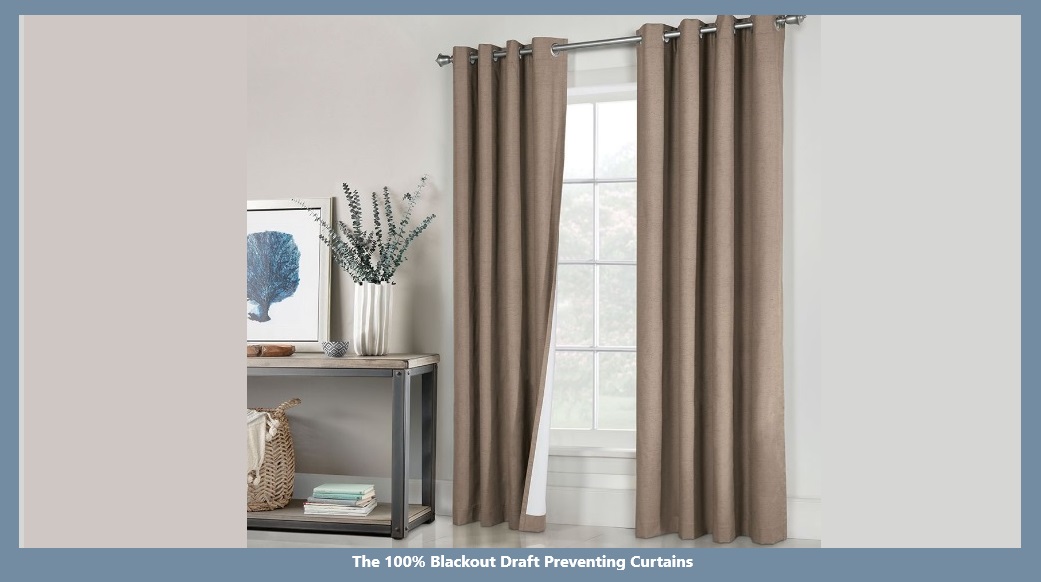
—Blinds for Compact Rooms: In smaller rooms, blinds are often the more practical choice. Their sleek design takes up less visual space, making the room feel larger and less cluttered. Blinds also allow more flexibility in terms of light control without overwhelming the room, which is particularly beneficial in spaces like kitchens, bathrooms, or small bedrooms where space is at a premium.
Room Functionality
The function of the room is another crucial factor in choosing between curtains and blinds:
—Best Options for Bedrooms: In bedrooms, where privacy and light control are paramount, both curtains and blinds have their advantages. Blackout curtains are ideal for those who prefer total darkness for sleep, while some blinds have blackout capabilities, most blinds offer precise light control that can be adjusted throughout the day. For the best of both worlds, consider layering blackout curtains over blinds to combine the benefits of both.
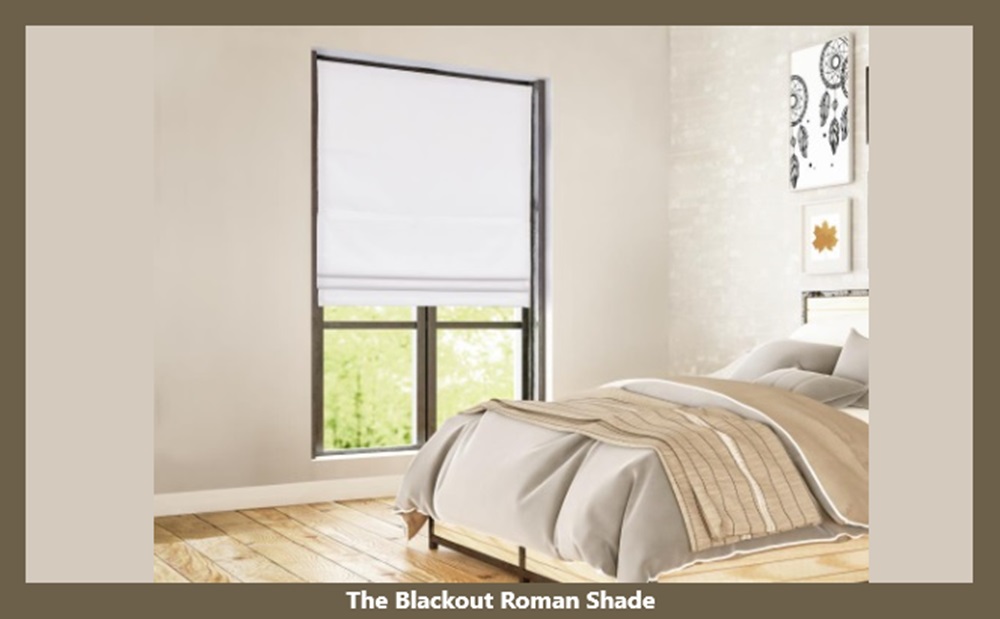
—Living Rooms and Common Areas: In living rooms and common areas, aesthetics often take center stage. Curtains can add softness and elegance, making the space feel more inviting. They also provide an opportunity to introduce color, pattern, or texture, adding visual interest to the room.
Blinds, on the other hand, offer a cleaner, more modern look that complements contemporary or minimalist decor. The choice here depends on the overall style of your space and the level of light control and privacy you need.
—Kitchens and Bathrooms: For kitchens and bathrooms, practicality is key. Blinds are typically the better option in these areas due to their moisture resistance and ease of cleaning. Faux wood or aluminum blinds are particularly well-suited for these environments, as they can withstand humidity without warping or mildewing. Curtains, while adding a decorative touch, may not be as durable in damp conditions and may require more frequent maintenance.
Matching Window Treatments to Decor
Your window treatments should function well and complement your existing decor:
—Continuity and Harmony: Consider how your window treatments will integrate with the rest of your room's decor. Curtains can bring a sense of continuity when matched with other fabric elements in the room, such as cushions, rugs, or upholstery. They can also tie together different color schemes or patterns, creating a cohesive look. Blinds, with their more neutral appearance, can blend seamlessly into the background, allowing other design elements to stand out.
—Coordinating Colors and Textures: Whether you choose curtains or blinds, it’s important to coordinate their color and texture with your room’s overall design. Curtains offer a wide range of options, from bold prints to subtle, textured fabrics, making it easy to find something that enhances your decor. Blinds are available in various finishes, such as wood grain or metallic, which can complement other materials in the room, like flooring or furniture.
—Mixing and Matching: Don’t feel limited to choosing only one type of window treatment. Often, combining curtains and blinds can offer the best of both worlds—blinds for practical, everyday use and curtains for added style and warmth. For example, in a living room, you might use blinds to control light during the day and add curtains for a decorative touch and added privacy in the evening.
The Best of Both Worlds: Combining Curtains and Blinds
When it comes to window treatments, you may not have to decide between curtains and blinds—you can enjoy the benefits of both by combining them. This approach allows you to leverage the strengths of each option, creating a versatile, layered look that offers enhanced functionality and aesthetic appeal. Here’s how to combine curtains and blinds successfully in your space.
—Coordinate Colors and Patterns: Ensure that the colors and patterns of your curtains and blinds complement each other. If your blinds are neutral, you can introduce more vibrant colors or patterns with your curtains. Conversely, if your blinds have a distinct color or texture, opt for curtains in a complementary shade to avoid clashing.
—Choose Compatible Styles: The style of your curtains and blinds should harmonize with each other and the overall decor of the room. For example, pair traditional fabric blinds with classic, elegant drapes, or modern, minimalist blinds with sleek, contemporary curtains. This ensures that the combination looks intentional and well-coordinated.
—Consider the Hardware: The hardware used to hang your curtains should be sturdy enough to support the weight of both the curtains and blinds. Opt for curtain rods and brackets that match the style and finish of your blinds for a unified look. Additionally, consider using double curtain rods or tracks to easily layer the curtains over the blinds without interference.
Conclusion
Choosing the right window treatment for your space involves more than just selecting a style you like; it requires careful consideration of your room's size, function, decor, and personal preferences.
Both curtains and blinds offer distinct features, benefits, and drawbacks that make them suitable for different spaces and needs. While curtains provide a touch of elegance and better insulation, blinds offer precise light control and a sleek, modern look.
However, you don’t have to limit yourself to just one option. Combining curtains and blinds allows you to enjoy the best of both worlds, offering enhanced light control, improved insulation, and a balanced aesthetic that can elevate the overall design of your space.
Ultimately, the decision between curtains, blinds, or a combination of both comes down to what works best for your specific environment and lifestyle. By considering the factors discussed in this article, you can make an informed choice that enhances both the functionality and beauty of your home, ensuring that your windows look great and serve their purpose effectively.
Ready to transform your space with the perfect window treatment? Whether you're drawn to the elegance of curtains, the sleek functionality of blinds, or a combination of both, Hammacher Schlemmer offers a wide range of high-quality options to suit any style and need. Explore our curated selection of curtains and blinds today and find the ideal fit for your home. Visit Hammacher Schlemmer to discover the perfect solution that brings both beauty and practicality to your space.










